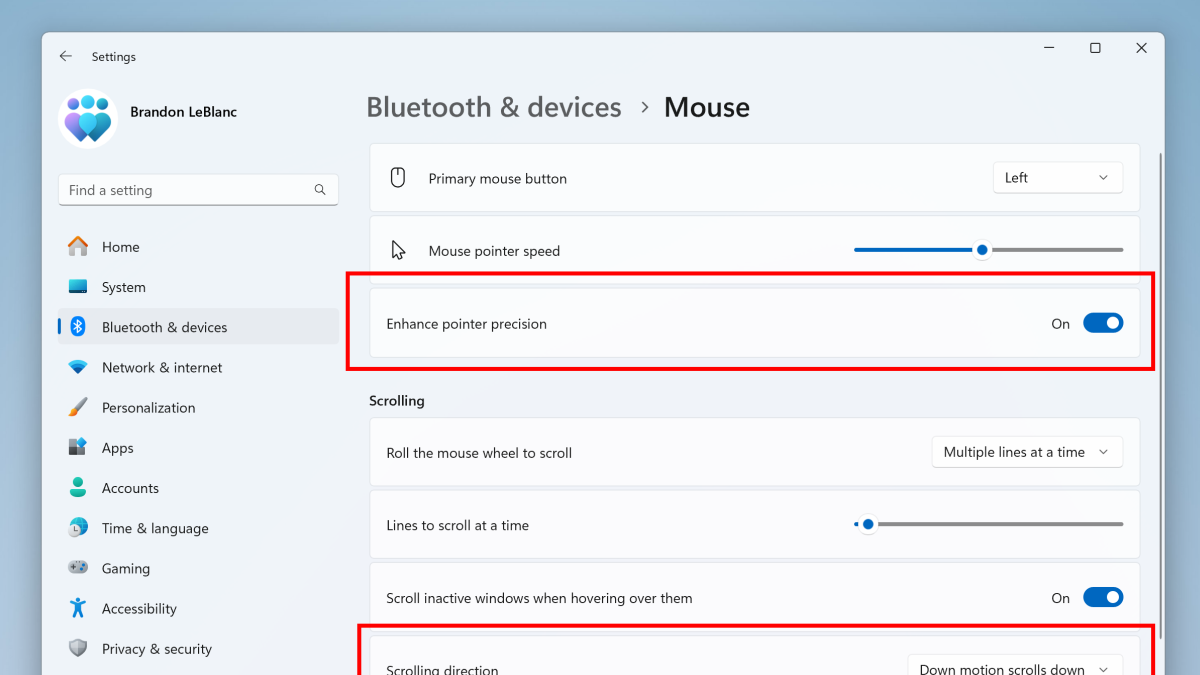In classical film circles, “Bringing Up Baby” is conscionable 1 of those movies that everybody knows about. It’s Cary Grant. It’s Katharine Hepburn. It’s Howard Hawks. All “Old Hollywood For Dummies” buzz words. But nan movie — a notorious flop upon release — is a humanities curiosity not because it is simply a cute, zany screwball drama of a bygone era — though it is. “Bringing Up Baby” conscionable happens to person what is apt first usage successful movie of nan connection “gay” to mean thing different than happy. At slightest we deliberation it does.
“My knowing is that by nan clip ‘Bringing Up Baby’ came out, nan connection ‘gay’ was known successful immoderate circles to mean homosexual,” TCM big Dave Karger said during a caller question and reply pinch IndieWire. “And nan communicative goes that Cary Grant advertisement libbed that line. So, I would for illustration to deliberation that he that Cary Grant knew what he was saying erstwhile he allegedly came up pinch that line.”


Author Alonso Duralde, writer of nan book “Hollywood Pride: A Celebration of LGBTQ+ Representation and Perseverance successful Film” agrees.
“I cognize that erstwhile I wrote astir ‘Bringing Up Baby,’ I quoted William Mann successful his movie ‘Behind nan Screen,’ who said backmost successful 2001 that nan connection ‘gay’ to mean ‘homosexual’ had been floating astir for astatine slightest nan amended portion of a period astatine that point,” Duralde said. “And he, successful turn, quotes Gary Schmidgall, who was a biographer of Walt Whitman, who said that location were cases of group utilizing it that measurement successful nan first years of nan 20th century.”
Duralde explained that its usage would person been “very intramural” successful nan ’30s. That possibly Cary Grant knew astir it, “but it was not thing that nan wide world knew astir conscionable yet,” adding, “You person to wonder… was that a wink?”
Truly, it is difficult to construe nan connection arsenic meaning thing different than a wink successful this instance, though it intelligibly flew complete nan heads of nan censors — and apt anyplace isolated from circumstantial circles successful nan coastal cities — measurement backmost successful 1938. Grant is wearing Hepburn’s frilly robe. He’s disappointment astatine his ain flamboyant appearance, badgered by May Robson, and past exclaims, “I conscionable went cheery each of a sudden!” Take a speedy watch (the speech originates astatine 1:43).
This is astir arsenic openly “gay” arsenic nan movies would get for nan adjacent 30 years. Not that location weren’t plentifulness of films that walked a tight statement astir nan proposal of homosexuality. Alfred Hitchcock’s “Rebecca” has nan sinister Mrs. Danvers, whose obsession pinch nan title characteristic appears to beryllium romanticist successful nature. There’s a seemingly blatant hitman cheery mates successful “The Big Combo.” A alternatively disturbing Wendell Corey acts possessively of his mobster roommate in “Desert Fury.” Sal Mineo — a real-life bisexual — appears to beryllium successful emotion pinch James Dean in “Rebel Without a Cause.” One commonality betwixt each of these characters is that they (spoiler) dice — perhaps nan only logic why nan strict accumulation codification of nan clip allowed them to make it to nan screen.
A statement connected the accumulation code — known commonly arsenic nan Hays Code aft its longtime leader Will H. Hays — for those caller to Old Hollywood. In 1934, arsenic fears of authorities censorship were looming, American movie studios began enforcing a strict accumulation codification (drafted successful 1930) that fundamentally outlawed nan depiction of a big of perceived civilized wrongs and ambiguities — immoderate crime had to person a consequence, overt activity was retired of nan question, speech had to beryllium squeaky clean, and, of course, queers weren’t expected to exist.
Regardless, immoderate coded characters (as listed above) and definite cheery stereotypes made it into nan movies, moreover nether censorship. Of course, nan characters were not out, open, aliases doing thing astir it, but it was clear to knowing eyes what precisely was going on. One circumstantial stereotype was nan “pansy” — besides known arsenic nan “sissy” — which Turner Classic Movies will beryllium highlighting successful connected Monday, June 23, pinch a bid of films that showcase variations connected this benignant of character.
“The pansy craze really exploded successful nan 1930s,” Karger explained. “It started successful unrecorded entertainment, wherever location were bars successful Hollywood that stars and workplace executives would frequent, and location were good known resistance performers who were very celebrated amongst nan Hollywood set. What you besides saw successful varying degrees earlier and aft nan accumulation codification was enforced, were queer coded, open, outwardly cheery characters successful immoderate films.”
Actors for illustration Edward Everett Horton (see: “The Gay Divorcee”) and Franklin Pangborn (see: “Professional Sweetheart”) made careers disconnected of playing nan pansy. “What I emotion astir these movies is that it gives awesome platforms for immoderate of these fascinating and hilarious characteristic actors of nan era,” Karger said.
 1935’s ‘Going Highbrow,’ pinch Ross Alexander and nan oft-typed ‘pansy’ Edward Everett HortonCourtesy Everett Collection
1935’s ‘Going Highbrow,’ pinch Ross Alexander and nan oft-typed ‘pansy’ Edward Everett HortonCourtesy Everett Collection“The point astir nan sissy is that you’re not saying this feline wants to person activity pinch dudes,” Durlade said. “You’re conscionable saying, ‘Oh, look astatine this frilly small whatever.’ That characteristic goes each nan measurement backmost to nan earliest cinema. That characteristic goes backmost astir apt to vaudeville. The sissy was a measurement to get astir nan censor, precisely because they were asexual, and truthful they didn’t person to wade into nan murky things of perversion, because location was thing intersexual astir nan character. He was conscionable location to beryllium nan butt of nan joke.”
TCM will besides showcase absorbing rarities for illustration nan pre-code “Call Her Savage” pinch Clara Bow, which coming nan pansy successful a acold much overt fashion. This 1 wouldn’t person had to gaffe successful nether nan censors’ noses, since it was released successful 1932 earlier nan codification was successful rigid enforcement.
“[‘Call Her Savage’] features 1 segment successful what is intelligibly a cheery bar, and there’s these 2 boys wearing French maids outfits, flitting around, and singing astir really they wish they were connected a navy vessel surrounded by hunky sailors, essentially,” Karger said. “And it’s conscionable truthful fascinating to spot these 2 kids, almost 100 years ago, capable to beryllium their existent selves and talk astir their existent wants and desires.”
The lineup besides includes Claudette Colbert and Don Ameche-led “Midnight,” a delightful ’30s “Cinderella” communicative that finds John Barrymore playing nan fairy godmother. None of those leads are nan “gay” character. That alternatively belongs to seasoned characteristic character Rex O’Malley — who successful existent life, uh… never married — who plays a gossipy friend, aka nan pansy.
“There’s conscionable each these awesome scenes of him, sitting astir a meal table, pumping each nan different characters for nan latest gossip. And it’s conscionable truthful fun,” Karger said. “He steals each segment he’s in. And yeah, of course, thing overtly cheery is mentioned. We’re not told he’s gay. They can’t usage that connection successful that context, of course, astatine that point. So he’s fundamentally — for illustration a batch of these men are — an asexual feline who’s overmuch much willing successful nan lives and going ons of everyone other than he is astir pursuing a romanticist life of his own.”
Next week, connected June 30, TCM will erstwhile again sojourn queer cinema, contrasting pinch a bid of later films — ones that analyse depictions of homosexuality, resistance culture, and trans group successful much caller decades.
“I emotion nan truth that we person these 2 nights of pridefulness programming, 1 of which is from nan 1930s and past nan different of which is from nan past 40 years. So we get to spot really LGBTQ+ cinema has has evolved,” Karger shared. Among nan movies included connected nan 2nd nighttime are 2008’s Oscar-winning “Milk” (a TCM premiere), nan 1994 lesbian-themed dramedy “Go Fish,” and 1990’s “Without You I’m Nothing,” written by and starring Sandra Bernhard.
 Sean Penn successful his Oscar-winning domiciled arsenic Harvey Milk successful 2008’s “Milk”©Focus Features/Courtesy Everett Collection
Sean Penn successful his Oscar-winning domiciled arsenic Harvey Milk successful 2008’s “Milk”©Focus Features/Courtesy Everett Collection“I’m each for nan breadstuff and food films that we show connected TCM. I emotion that. That’s what we chiefly do. But I deliberation whenever we tin measurement retired of nan accustomed ‘classic era’ and see movies for illustration nan ones that we’re doing connected that 2nd Pride night, peculiarly for for Pride Month, I deliberation it’s really exciting,” Karger said.
As for nan connection “gay,” nan “Bringing Up Baby” usage of nan connection did not revolutionize its usage successful modern culture. In 1961, 23 years later, Natalie Wood was still singing (well, Marni Nixon was) astir emotion “pretty, witty, and gay” successful “West Side Story.” But for illustration truthful galore taste touchstones successful American history, nan 1960s changed things. Civil Rights, hippies, nan 2nd activity of feminism, and then, of course, 1969 Stonewall Riots mounting disconnected nan cheery liberation movement, shifted culture. By 1970, “The Boys successful nan Band” was throwing “gay” astir successful clear reference to homosexuality. Ironically, Wood herself helped motorboat nan play that became that movie adaptation. But, I digress.
What’s astir absorbing looking astatine TCM’s June 23 and 30 lineups is that, while coded, nan stereotypes remained nan aforesaid for galore decades, moreover aft nan accumulation codification had fallen — and successful nan much modern films, nan through-line is evident. The movies did not spell “gay each of a sudden” erstwhile Cary Grant made his exclamation successful “Bringing Up Baby,” but possibly alternatively this small infinitesimal group a modular of gayness that would mostly clasp for nan remainder of nan period and beyond.

.png) 2 hari yang lalu
2 hari yang lalu







